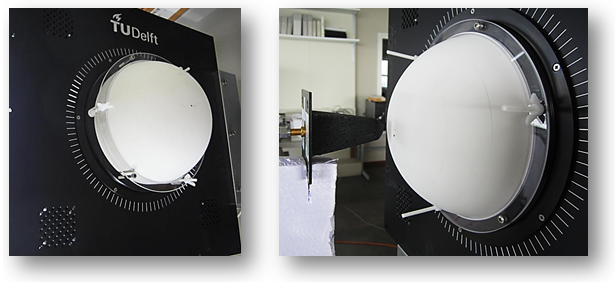Specialization profile--Applied electromagnetics
The profile Applied Electromagnetics focuses on the education of students on various theoretical and practical aspects of electromagnetic fields and radiation. The education deals with an extensive introduction to the electromagnetic theory which is necessary in most fields of electrical engineering, such as communications, antenna, radar, microwave engineering. The most useful mathematical tools for the analysis of electromagnetic problems and antenna are explained with parallel emphasis to their application in real-world problems.
Within this specialisation, you will learn about the physical phenomena behind generation, guided propagation, transmission, and reception of electromagnetic waves, as well as the principles of radiation from antennas, typical antenna structures, and antenna design skills.
Compulsory courses for this profile are:
- EE4C05 Electromagnetics (Q1)
- EE4510 Advanced electromagnetics (Q2)
- EE4725 Quasi optical systems (Q3)
- EE4620 Spectral domain methods in electromagnetics (Q4)
- EE4595 Wavefield imaging (Q4)
Suggested courses
| EE4510 | Advanced electromagnetics | 5 EC | details | ||
| EE4565 | Propagation and scattering of electromagnetic waves | 5 EC | details | ||
| EE4595 | Wavefield imaging | 5 EC | details | ||
| EE4620 | Spectral domain methods in electromagnetics | 4 EC | details | ||
| EE4725 | Quasi optical systems | 4 EC | details | ||
| EE4730 | High frequency wireless architectures | 3 EC | details | ||
| EE4C05 | Electromagnetics | 5 EC | details | ||
| EE4C13 | Wireless systems for electrical engineering applications | 5 EC | details | ||
| ET4169 | Radar I: From basic principles to applications | 5 EC | details |
MSc project proposals
Some examples of thesis topics (this list is not exhaustive):Thesis examples
| 2019 | Andrea Degasperi | Time Domain Modeling of Photoconductive Antennas |
|---|
Contact person
For more information about the research group, possible thesis topics, and suggestions for your ISP:prof.dr. Andrea Neto
Terahertz Sensing Group
Department of Microelectronics
